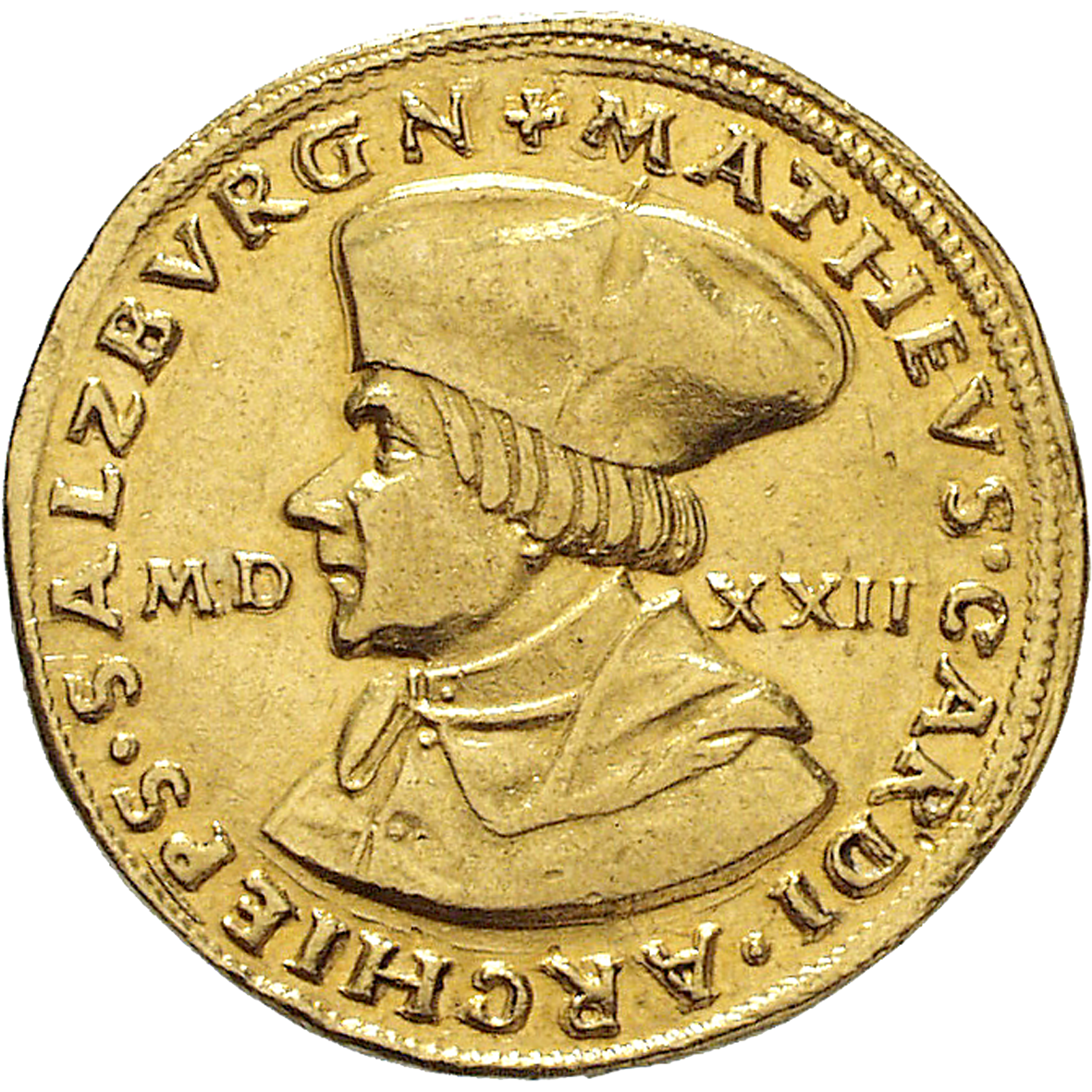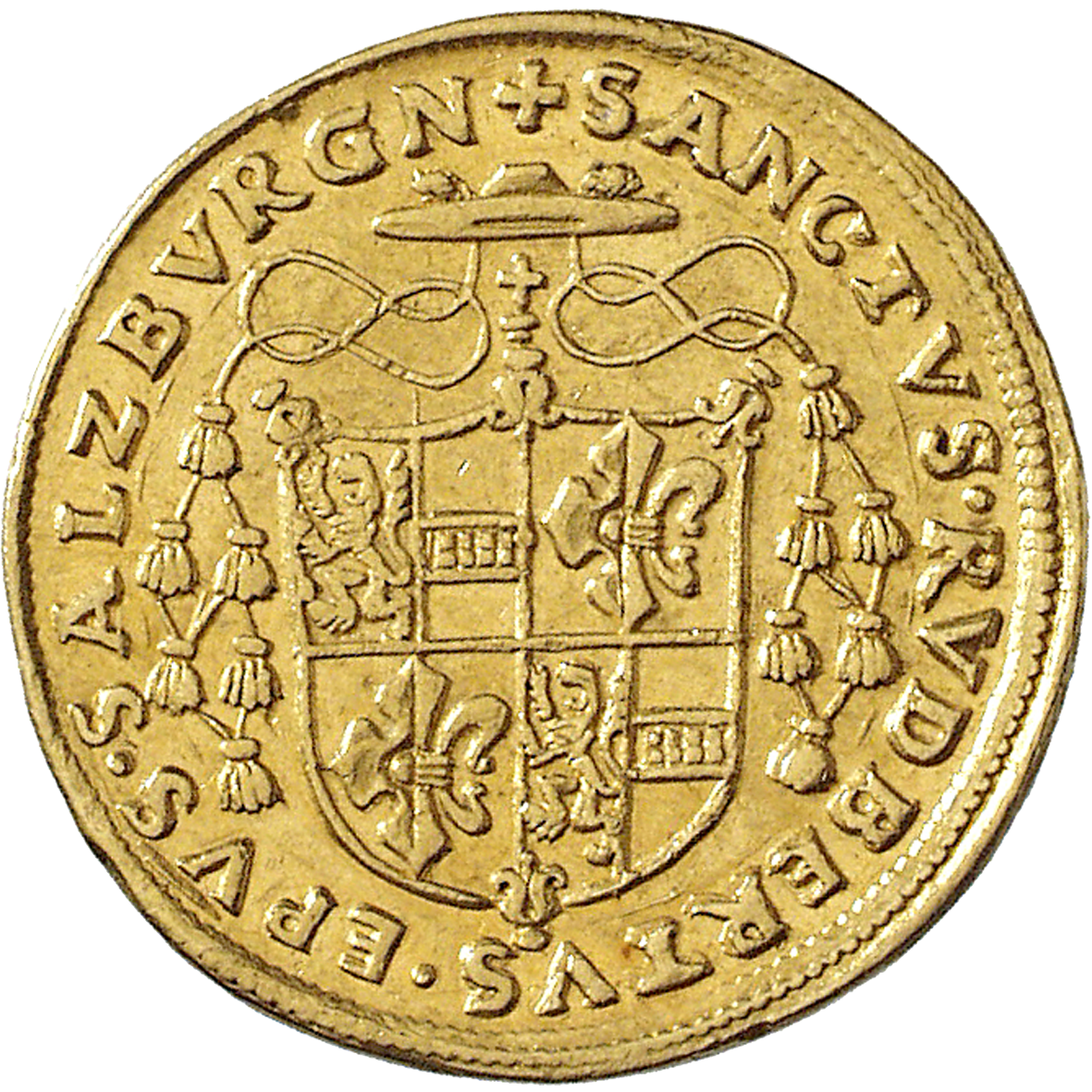Die Prägung von Goldmünzen erreichte im mittelalterlichen Salzburg nie nennenswerte Bedeutung. Während der ersten Hälfte des 15. Jahrhunderts bezahlten die Salzburger Kaufleute grössere Summen mit ungarischen Dukaten. Danach übernahmen die Rheinischen Goldgulden die Funktion von Handelsmünzen, und behielten sie bis ins späte 16. Jahrhundert bei. Dennoch begann im Jahr 1500 auch das Erzbistum Salzburg mit der Prägung der ersten grossen Silbermünzen, den Guldinern, und von Goldmünzen. Die neu einsetzende Goldprägung umfasste die zwei bekannten Arten – Dukaten nach ungarischem und Gulden nach rheinischem Münzfuss. Dabei unterhielten die Salzburger Erzbischöfe stets eine vorbildliche Prägung. Dieser Dukat entspricht exakt seinem ungarischen Vorbild. Die Vorderseite zeigt das Brustbild des Prägeherrn, des Erzbischofs Matthäus Lang von Wellenburg (1519-1540), die Rückseite einen Schild mit den Wappen des Stiftes und dem Familienwappen des Erzbischofs.

